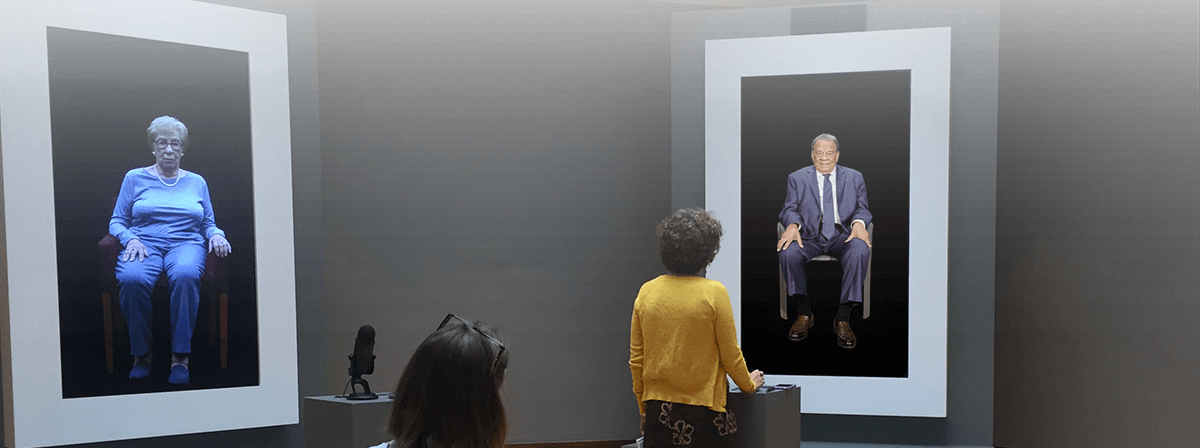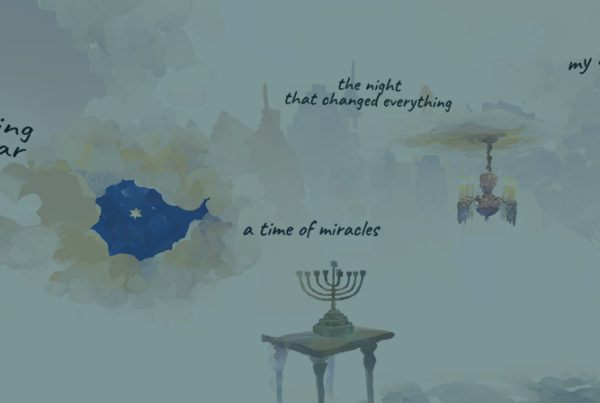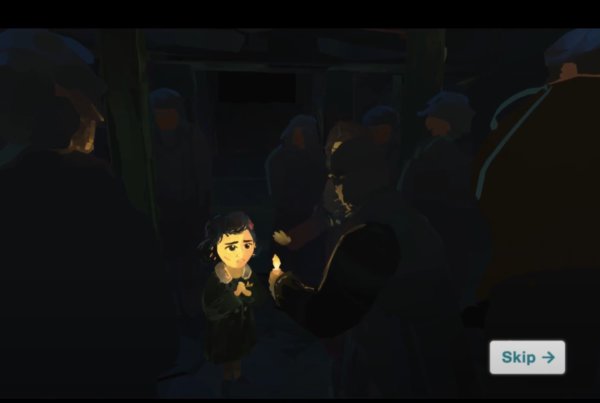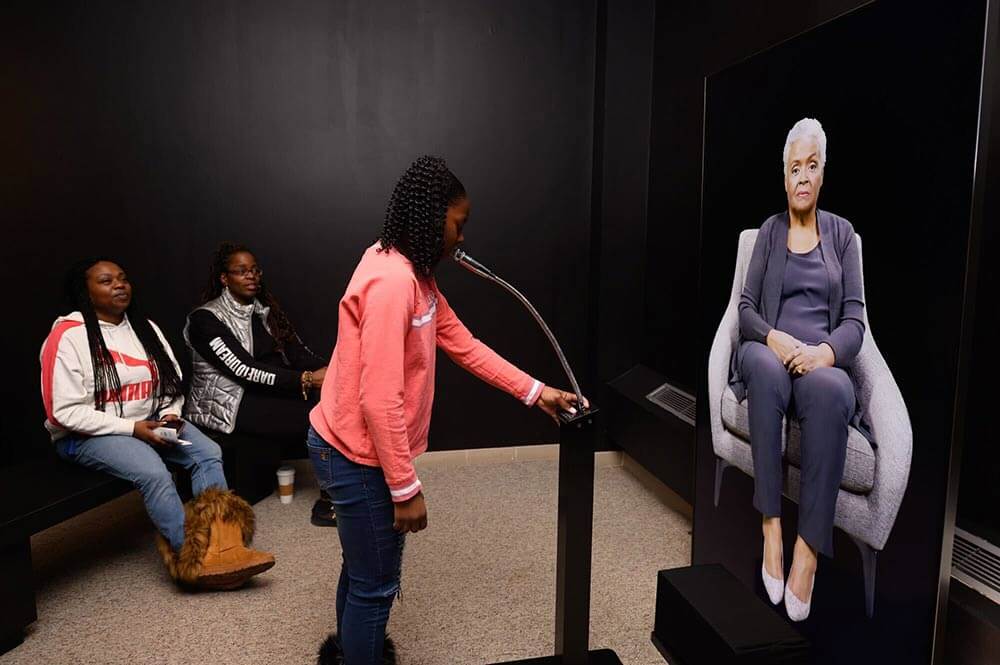
Transforming Museums Exhibits
By Stephen D. Smith, Chair & CEO, StoryFile
Museums are about people. They tell the story of places, adventures, discoveries, and reveal how human beings have shaped the world. Museums are no longer places where exhibits are curated from dusty archives into glass cases with printed labels. They are now highly dynamic learning spaces where collections are woven into tactile and immersive experiences that allow visitors to interact with history. They are places of curiosity where visitors discover more about the world and the people that make it possible.
Conversational Video in Museums
This is where Conversational Video comes in and with it a number of immersive modes by which to interact with the past. These include holographic displays, virtual reality and augmented reality experiences that provide unparalleled access to interact with the people that have made history happen.
Thanks to StoryFile’s digital recreation technology, it is also now possible to bring back to life individuals who are no longer living, using their personal archives and memoirs. Imagine meeting Elvis Presley in Graceland, JFK at the Kennedy Center, Sam Walton in Bentonville. The possibilities of engaging with these figures opens up new modes of learning. It also brings their humanity front and center for new generations.
StoryFile began its journey into museums using high fidelity immersive conversations with global leaders, war veterans, Holocaust survivors, space explorers, and many more. StoryFile interviews bring museum spaces to life with beautiful life-sized holographic conversations that enhance museum exhibitions around the world.
One of the outcomes that researchers have discovered is that when young people ask questions they are 13% more likely to retain the information they hear (Rothstein & Santana, 2011). Enquiry-led experiences increase engagement, empower the visitor to create their own journey, and provide many opportunities for post-visit learning and education.
StoryFile technology supports curiosity-based learning through deeply engaging interactive Conversational Videos for inclusion on the exhibition floor or online.
AAM 2022
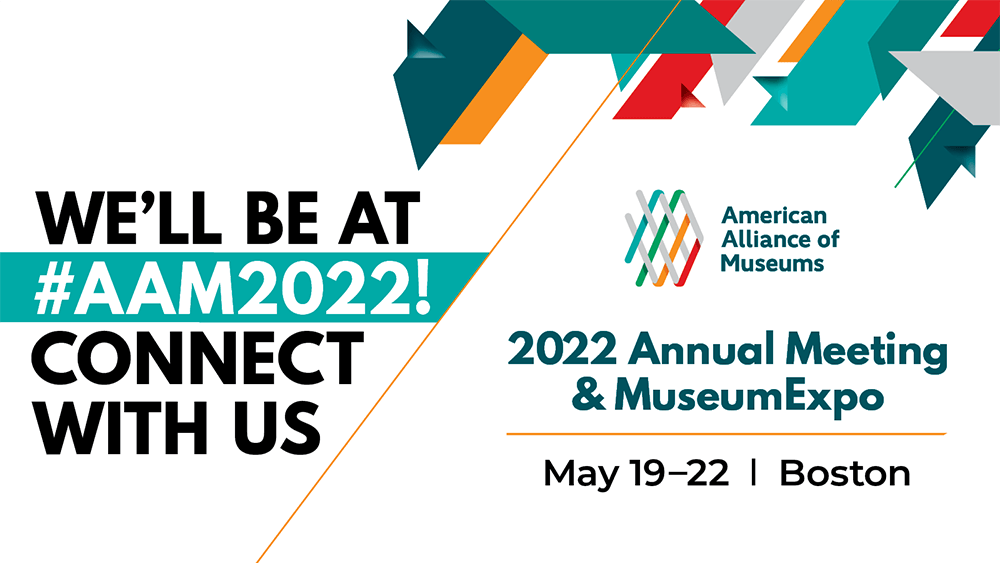
This week, we’re attending the American Alliance of Museums (AAM) Expo in Boston. It’s one of the major museum conferences in the United States, and we’re excited to attend and share StoryFile’s powerful technology. Please visit us at booth 942.
Some Helpful Sources:
Lawson, Timothy J, James H Bodle, Melissa A Houlette, and Richard R Haubner. “Guiding Questions Enhance Student Learning from Educational Videos.” Teaching of psychology 33, no. 1 (2006): 31–33.
Brill, Gilat, and Anat Yarden. “Learning biology through research papers: a stimulus for question-asking by high-school students.” Cell biology education vol. 2,4 (2003): 266-74. doi:10.1187/cbe.02-12-0062
https://www.ncbi.nlm.nih.gov/pmc/articles/PMC256972/
Vale, Ronald D. “The value of asking questions.” Molecular biology of the cell vol. 24,6 (2013): 680-2. doi:10.1091/mbc.E12-09-0660
https://www.ncbi.nlm.nih.gov/pmc/articles/PMC3596240/
Christine Chin & Jonathan Osborne (2008) Students’ questions: a potential resource for teaching and learning science, Studies in Science Education, 44:1, 1-39, DOI: 10.1080/03057260701828101Rothstein, Dan, and Luz Santana. Make Just One Change : Teach Students to Ask Their Own Questions. Cambridge, Massachusetts: Harvard Education Press, 2011.

